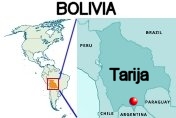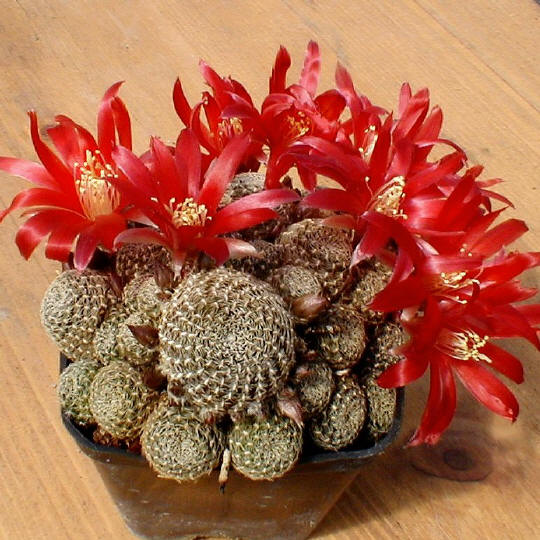|
|
|
Family:
Cactaceae (Cactus
Family)
Scientific Name:
Aylostera heliosa var. melanistic
(sensu Krahn - Uhlig)
Synonyms:
- Rebutia densipectinata (n. n. Kníže, non
Ritter)
- Sulcorebutia densipectinata (hort. mix. gen.,
USA)
- Aylostera densipectinata (hort.)
- Rebutia heliosa var. condorensis
(sensu Donald, Pilbeam)
- Aylostera heliosa var. melanistic.

Distribution:
Bolivia (Near Tarija (Jucanas) on the road to Narvaez)
Habitat: It grows in mountainous areas at an
altitude around 2500 m 3000 m over sea level
Conservation status: Listed in
CITES Appendix II
|
|
Description:
It is
essentially a miniature plant
that
readily forms a
clustering
mound of tiny heads.
Stem: Heads 2.5 cm wide, rarely higher than 3 cm or more.
Flower:
Large
dark-red,
funnel-shaped, long -necked, 4 cm in diameter, 5 cm long.
Phenology:
Blossoming time:
Profusely flowering in
spring.
 |
|
|
|
Cultivation:
These plants come from
mountainous areas, so like bright light, cool and
dry conditions in the
winter; this is important for the
flowers as well as for their
health. Without this
cool winter period (0-10° C) they normally wont get many
buds. They have thick
taproot and are of difficult cultivation and
rot prone because of a great
sensitivity to the
excess of watering, not easy to get to any large size on their own
roots really a challenge to grow into a large
clump. They are commonly
grafted to avoid root problems and to make easier to grow.
Sun Exposure: Suited for
sunny-brightly exposure; can tolerate
light shade.
Cultural Practices: Suited for
airy exposures. Needs deep pot and good
drainage to accommodate its
tap root.
It is very cold resistant as low as
to -10° C or less for
short periods of time. It is a fine plant for a rock garden or
container, contrasts well with agaves, yuccas, and low-growing flowering
plants.
Pests &
diseases: R.
heliosa is especially
prone to root rot, therefore,
underpot in a smaller container filled with very
porous compost.
Propagation: Cutting as it branches freely from the base;
Also can be grown from seeds or graft. Seeds can
be sown in the spring or summer. The seedlings should not be disturbed
until they are well rooted after which they can be planted separately in
small pots. Photo of conspecific
taxa, varieties, forms and cultivars of Rebutia heliosa:

 |
|